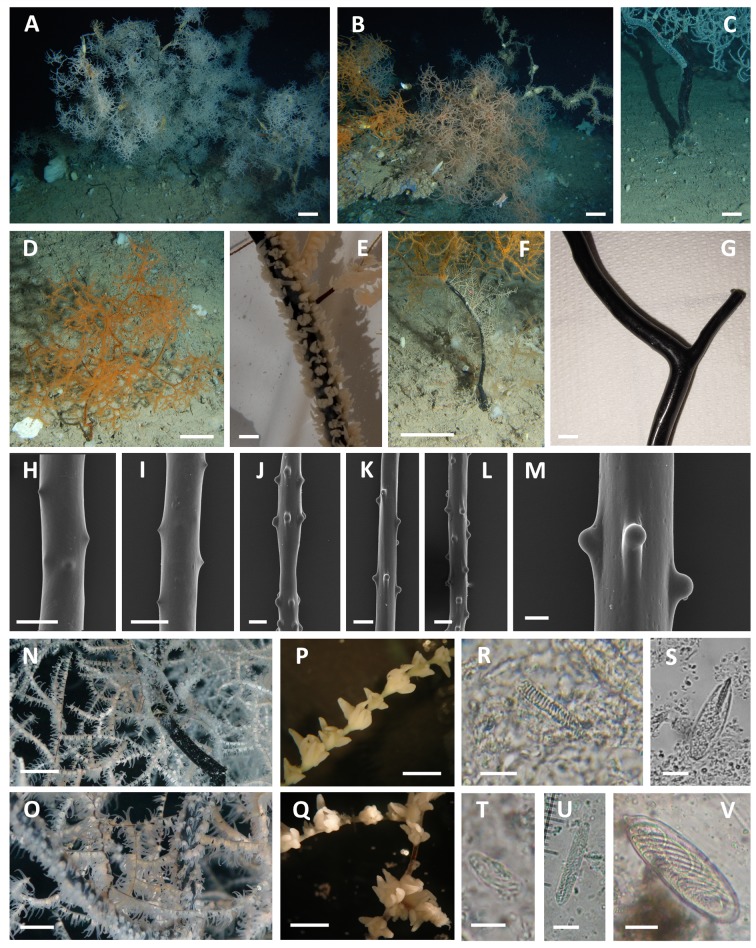Fig 7. Leiopathes glaberrima.
A-B. Various phenotypes of L. glaberrima co-occurring in the same population as patches on the rocky outcrops. C. Naked basal portion of the stem of the largest colony found in the study area. D. Small orange juvenile. E. Polyps arrangement along a major branch. F. Hydroids colonizing the basal portion of the stem. G. Smooth, polished stem (SARD1). H-M. Close-up views of the conical spines in branchlets of various diameter (SARD19a). N-O. Patches of light orange fertile polyps among white non fertile polyps. P-Q. Monoserial arrangement of the polyps along the branchlets. Alternation of adult and juvenile polyps is visible (LEIO). Cnidome (SARD19a, b, c): R. Spirocyst. S. p-mastigophore. T. Small isorhiza. U. Basitrich isorhiza. V. Large Penicilli E. Scale Bar: A, B, C, D, F: 10 cm; N: 1.5 cm; O: 1 cm; E, G, P, Q: 3 mm; H, I: 0.5 mm; J, K, L: 0.4 mm; M: 0.05 mm; R, S, U: 10 μm; T, V: 5 μm.

